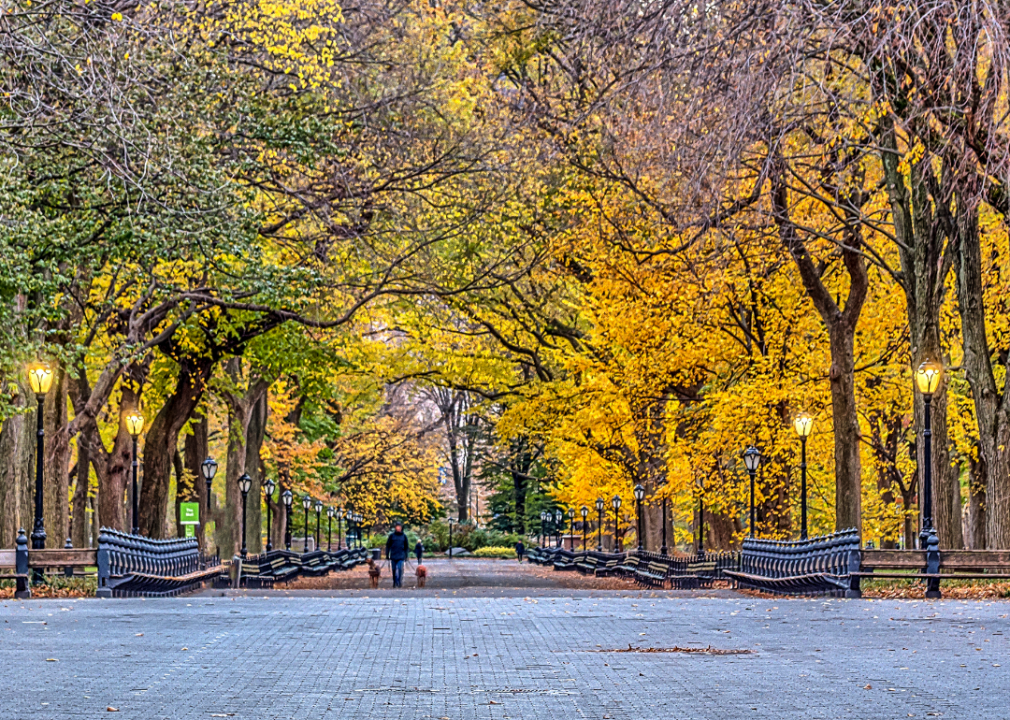
Louisiana has 2 of the 50 cities with the most green space per capita
Louisiana has 2 of the 50 cities with the most green space per capita
Green space is beneficial anywhere, but especially in concrete jungles like those found in many U.S. cities. The World Health Organization reports that green areas are essential to both the ecosystem and the mental health of citizens; though the color is fading quickly in urban areas that are cutting down trees and rapidly building on open space. There are, however, some cities across America that are fighting hard to keep green space within their borders.
Using data from the Organization for Economic Co-operation and Development, analyzed by the United Nations Office for the Coordination of Humanitarian Affairs, Stacker considered the 70 U.S. cities with the most green space per capita and then ranked the top 50 by the green space areas devoted to parks and urban regions.
Read on to see which cities in your state made the list, or see the national story here.
#48. New Orleans
- Green space per capita: 2,572 sq. ft.
- Population: 1.2 million
Famous for concrete streetways of fun, New Orleans also has the most significant section of mature live oak trees in the world, with up to 1,300 acres of green space planted with global seedlings. Armstrong Park, Crescent Park, Longue Vue House and Gardens, and the Houmas House Plantation all add additional acres of land to the historic city. Plus, the underserved area of Lake Charles received a $225,000 Urban Parks grant in 2018 from the National Park and Recreation Association to reduce flooding by adding green space.
#40. Baton Rouge
- Green space per capita: 5,841 sq. ft.
- Population: 825,478
Baton Rouge Green is a group of dedicated Louisianians whose love for saplings helped the city win the Arbor Day Foundation Tree City USA in 2017 and 2018. Strategies like the City Citrus Project, which transforms underused green spaces into orchards, and Living Roadways, which has grown 4,300 trees along significant corridors continue to raise the tree bar high in Baton Rouge. One nationally recognized historic park in Louisiana that makes up hundreds of acres of green space is New Orleans Jazz, a large lawn dedicated to the city's most famed musical genre.
Some cities have gotten creative in constructing green space within their boundaries. Houston, Nashville, and Des Moines, Iowa, are among the many cities putting large green spaces on public rooftops. Atlanta even has plans to cover some of its highways with parks.
The former commissioner of the New York City Department of Parks and Recreation Adrian Benepe promotes the 10-Minute Walk campaign, an initiative to have a park within a 10-minute walk in all U.S. cities by 2050. Now the senior vice president for the Trust for Public Land, Benepe points to how green space helps the ecosystem. "When I see a tree, I see the work of God because a tree is a remarkable machine," Benepe said. "It does extraordinary things in exchange for very little."
What's more, the health benefits of parks and green spaces in cities are numerous, according to The National Recreation and Park Association. Large parks promote active living, which can reduce the risk of diabetes and heart disease, while research shows even small parks can reduce stress and improve creativity and mental health.
To learn more about which cities made the top of the list, keep reading below.
Cities with the most green space per capita
#1. Minneapolis, MN: 105,843 sq. ft. per capita
#2. Kansas City, MO: 93,349 sq. ft. per capita
#3. Cincinnati, OH: 67,723 sq. ft. per capita
#4. Washington, DC: 63,138 sq. ft. per capita
#5. Nashville, TN: 57,699 sq. ft. per capita



